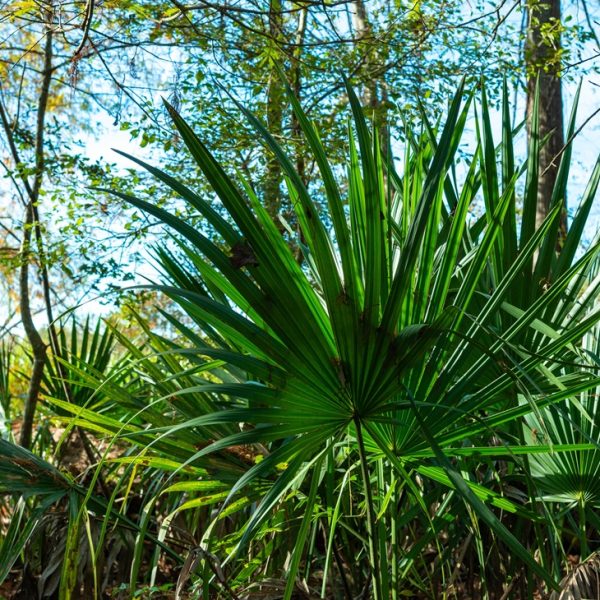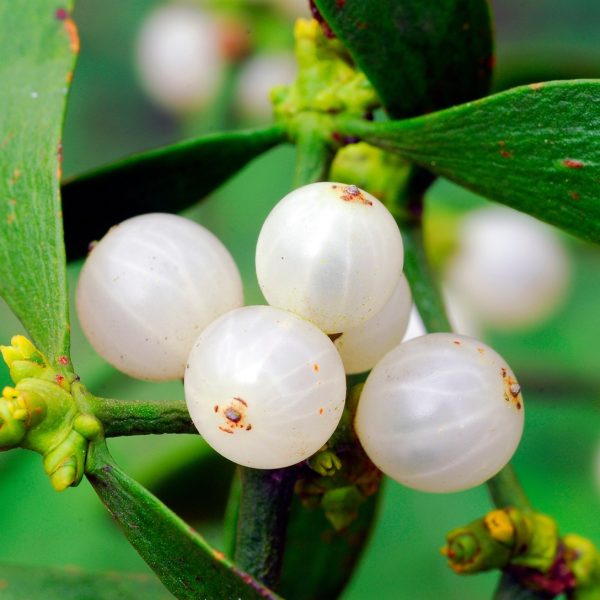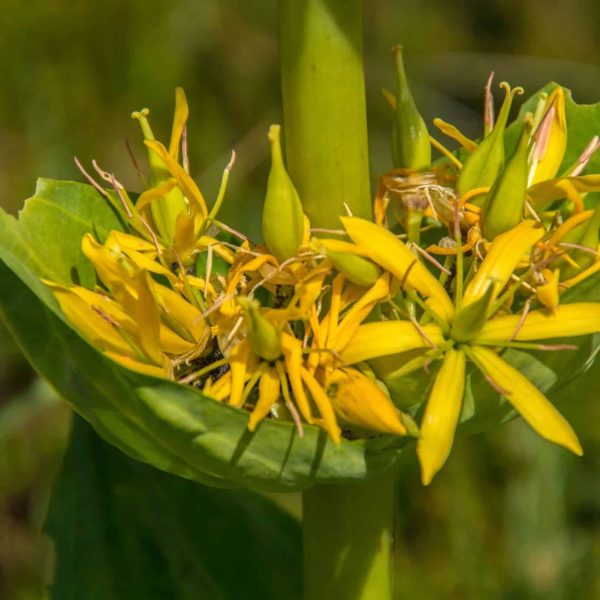Parkinson’s disease is a neurological condition that impacts motor control, sleep, mood and digestive function via loss of dopaminergic neurons in the substantia nigra.
Understanding Parkinson’s disease

Parkinson’s disease (PD) is a progressive neurodegenerative disorder that primarily affects movement and coordination (1). It is the second most common neurodegenerative disease worldwide after Alzheimer’s (2).
In the United Kingdom, approximately 145,000 people are living with Parkinson’s, and around 18,000 new cases are diagnosed each year, according to Parkinson’s UK (2023) (3). The majority of people diagnosed are over 60, but young-onset Parkinson’s, diagnosed before the age of 50, accounts for about 5–10% of cases.
As the population ages, the prevalence of Parkinson’s is expected to rise (4). The World Health Organization (WHO) projects that neurodegenerative diseases will soon surpass cancer to become the second leading cause of death worldwide, following cardiovascular disease (5).
How Parkinson’s disease works
Parkinson’s disease is characterised by the progressive loss of dopamine-producing neurons in the substantia nigra, a region of the midbrain that is critical for controlling movement (6). Dopamine is a neurotransmitter involved in transmitting signals between brain cells. Its depletion leads to the characteristic motor symptoms of Parkinson’s such as tremor, rigidity, and bradykinesia (slowness of movement) (6,7).
The hallmark pathological feature of Parkinson’s is the presence of Lewy bodies, which are abnormal aggregates of the protein alpha-synuclein, within the affected neurons. These inclusions interfere with normal cellular function and contribute to neurodegeneration (6). Parkinson’s is increasingly recognised as a multisystem disorder affecting not only the motor system but also non-motor areas of the nervous system and various other organs, including the gastrointestinal tract (8).
Understanding the root causes

The causes of Parkinson’s disease remain complex and multifactorial, involving a dynamic interplay between genetic susceptibility and environmental influences (6). While the majority of Parkinson’s cases are idiopathic, meaning they have no known cause, around 10–15% can be attributed to specific genetic mutations such as SNCA, LRRK2, and PARK7. These mutations are more commonly associated with familial Parkinson’s and early-onset cases (9).
Environmental factors also contribute significantly, with long-term exposure to pesticides, herbicides, heavy metals, and certain industrial solvents shown to increase the risk of developing the disease (10,11). Furthermore, mitochondrial dysfunction, which leads to impaired cellular energy production, and oxidative stress, characterised by excessive production of damaging free radicals, are believed to play pivotal roles in the death of dopamine-producing neurons (12).
Another emerging area of research implicates the gut-brain axis, suggesting that Parkinson’s may originate in the gastrointestinal system, where misfolded alpha-synuclein proteins potentially travel from the enteric nervous system to the brain via the vagus nerve (13,14).
Lifestyle factors such as poor diet and chronic stress may also contribute indirectly by exacerbating systemic inflammation and reducing neuroprotection (15).
Signs and symptoms of Parkinson’s
Parkinson’s symptoms are typically divided into motor and non-motor categories (7,16,17):

Motor symptoms
- Resting tremor (often starting in one hand)
- Muscle rigidity
- Bradykinesia (slowness of movement)
- Postural instability
- Shuffling gait and freezing of movement
Non-motor symptoms
- Depression and anxiety
- Constipation and gastrointestinal dysfunction
- Sleep disturbances (REM sleep behaviour disorder)
- Loss of sense of smell (anosmia)
- Cognitive impairment and eventual dementia
These non-motor symptoms can precede the onset of motor symptoms by years, offering opportunities for early intervention (16,17).
Herbs for Parkinson’s disease
Herbal medicine can offer valuable support in managing symptoms, slowing disease progression, and improving quality of life, although we are currently lacking studies with enough participants in them to observe a statistically significant difference (18). Herbs can be used to modulate oxidative stress, inflammation, neurotransmitter function, and nervous system resilience (19).

Neuroprotective, antioxidant and dopaminergic support
Mucuna (Mucuna pruriens)
This Ayurvedic plant is a natural source of L-DOPA, a precursor to dopamine. Small clinical trials have shown that mucuna-based preparations can be as effective as pharmaceutical L-DOPA, with potentially fewer side effects (20,21). Preclinical studies show it has potent antioxidant, metal-chelating, and anti-inflammatory effects, supporting its neuroprotective potential (22).
Ginkgo (Ginkgo biloba)
Ginkgo enhances cerebral circulation and has antioxidant and anti-inflammatory properties (23). It supports cognitive function and could protect dopaminergic neurons. Clinical studies in animal models have demonstrated that ginkgo significantly protects dopaminergic neurons, preserves striatal dopamine levels, sustains glutathione and superoxide dismutase activity, and reduces lipid peroxidation and inflammation in the substantia nigra (24,25).
Brahmi (Bacopa monnieri)
Brahmi is another Ayurvedic herb, with adaptogenic properties that improves memory, reduces anxiety, and protects neurons from oxidative damage. In vivo and in vitro studies in Parkinson’s models have shown that it reduces oxidative stress and preserves dopaminergic neurons, improving motor and behavioural outcomes (26). A pilot clinical trial in Parkinson’s patients found that 450 mg/day of bacopa improved emotional well-being and quality of life (27). A systematic review also supports its potential to enhance cognition and protect against neurodegeneration (28).
Ashwagandha (Withania somnifera)
An adaptogen with neuroprotective properties that reduces oxidative stress, supports cognition, and alleviates anxiety and fatigue (29). Ashwagandha helps protect dopaminergic neurons, supports mitochondrial function, and mitigates pathways of cell death in Parkinson’s models (30).
Anti-inflammatory herbs
Turmeric (Curcuma longa)
Curcumin, one of the active compounds in turmeric, modulates inflammatory pathways and oxidative stress, and has been shown neuroprotective potential in Parkinson’s disease. A 12-month pilot RCT using phospholipid-formulated curcumin in Parkinson’s patients found symptoms were stabilised as well as a reduction in α-synuclein deposits in skin biopsies (31).

Nervine tonics
Lavender (Lavandula angustifolia) and passionflower (Passiflora incarnata) are used as nervine tonics, meaning they help support and nourish the nervous system (29). While they are not disease-modifying for Parkinson’s, they can offer symptomatic support for non-motor symptoms such as anxiety, insomnia, and mood disturbances, which are common in Parkinson’s and can significantly affect quality of life. Passionflower is also a mild muscle relaxant, so it could help alleviate minor tremors or rigidity indirectly by reducing tension (32).
Gut-brain axis
Gentian (Gentiana lutea)
Gentian root contains bitter compounds that stimulate the secretion of digestive juices (saliva, gastric acid, bile) via bitter taste receptors in the gut. This enhances digestion and motility (33).
Lemon balm (Melissa officinalis)
Lemon balm calms the gut-brain axis, reduces gastrointestinal distress, and supports mood (32). Its anxiolytic and antispasmodic effects are attributed to its interaction with GABA receptors, which helps reduce gut spasms and anxiety-related GI symptoms. It modulates the gut-brain axis via neurochemical pathways, easing GI distress like bloating and cramping while improving mood (34).
Fermented foods and prebiotic herbs
Fermented foods provide live beneficial bacteria that improve gut microbial diversity and metabolic function, which is increasingly recognised as a key modulator of systemic inflammation and neuroinflammation (35). Prebiotic herbs like burdock root (Arctium lappa) and dandelion root (Taraxacum officinale) contain inulin and other fibres that selectively feed beneficial gut bacteria, enhancing microbiota balance and reducing systemic inflammation.
Holistic solutions

Nutrition and diet
An antioxidant-rich diet that includes fresh fruits and vegetables, green tea, olive oil and spices such as turmeric can help mitigate oxidative stress and inflammation implicated in neurodegeneration (36). Adherence to Mediterranean or MIND dietary patterns has been associated with slower cognitive decline, including in older adults and individuals with Parkinson’s disease (37). Spacing out protein intake across the day rather than consuming large amounts at once can help optimise levodopa absorption and reduce motor fluctuations, as dietary protein competes with the drug for intestinal transporters (38,39).
Exercise and movement therapies
Regular physical activity plays a vital role in the management of Parkinson’s disease by improving motor symptoms, promoting neuroplasticity, and enhancing overall quality of life. Engaging in movement therapies such as tai chi, yoga, qigong, and dance therapy can significantly benefit balance, coordination, flexibility, and gait stability. These practices also offer psychological benefits, such as reduced anxiety and improved mood, which are particularly valuable in addressing the non-motor symptoms of Parkinson’s. Evidence suggests that consistent, structured movement interventions not only help maintain physical function but could also slow functional decline and promote brain resilience (40,41).
References
- Rogers G, Davies D, Pink J, Cooper P. Parkinson’s disease: summary of updated NICE guidance. BMJ. 2017;358:j1951. https://doi.org/10.1136/bmj.j1951
- Dorsey ER, Elbaz A, Nichols E, et al. Global, regional, and national burden of Parkinson’s disease, 1990–2016: a systematic analysis for the Global Burden of Disease Study 2016. Lancet Neurol. 2018;17(11):939-953. https://doi.org/10.1016/s1474-4422(18)30295-3
- Parkinson’s UK. Parkinson’s facts and stats. Accessed July 5th, 2025. https://www.parkinsons.org.uk/about-us/reporting-parkinsons-information-journalists
- Su D, Cui Y, He C, et al. Projections for prevalence of Parkinson’s disease and its driving factors in 195 countries and territories to 2050: modelling study of Global Burden of Disease Study 2021. BMJ. 2025;388. https://doi.org/10.1136/bmj-2024-080952
- Gammon K. Neurodegenerative disease: brain windfall. Nature. 2014;515(7526):299-300. https://doi.org/10.1038/nj7526-299a
- Vázquez-Vélez GE, Zoghbi HY. Parkinson’s disease genetics and pathophysiology. Annu Rev Neurosci. 2021;44:87-108. https://doi.org/10.1146/annurev-neuro-100720-034518
- Clarke CE. Parkinson’s disease. BMJ. 2007;335(7617):441-445. https://doi.org/10.1136/bmj.39289.437454.ad
- Tan AH, Chuah KH, Beh YY, et al. Gastrointestinal dysfunction in Parkinson’s disease: neuro-gastroenterology perspectives on a multifaceted problem. J Mov Disord. 2023;16(2):138. https://doi.org/10.14802/jmd.22220
- Salles P, Tirapegui JM, Chaná-Cuevas P. Genetics of Parkinson’s disease: dominant forms and GBA. Neurol Perspect. 2024;4(3):100153. https://doi.org/10.1016/j.neurop.2024.100153
- Goldman SM. Environmental toxins and Parkinson’s disease. Annu Rev Pharmacol Toxicol. 2014;54:141-164. https://doi.org/10.1146/annurev-pharmtox-011613-135937
- Pouchieu C, Piel C, Carles C, et al. Pesticide use in agriculture and Parkinson’s disease in the AGRICAN cohort study. Int J Epidemiol. 2018;47(1):299-310. https://doi.org/10.1093/ije/dyx225
- Bose A, Beal MF. Mitochondrial dysfunction in Parkinson’s disease. J Neurochem. 2016;139(Suppl 1):216-231. https://doi.org/10.1111/jnc.13731
- Klann EM, Dissanayake U, Gurrala A, et al. The gut–brain axis and its relation to Parkinson’s disease: a review. Front Aging Neurosci. 2021;13:782082. https://doi.org/10.3389/fnagi.2021.782082
- Houser MC, Tansey MG. The gut–brain axis: is intestinal inflammation a silent driver of Parkinson’s disease pathogenesis? NPJ Parkinsons Dis. 2017;3(1):3. https://doi.org/10.1038/s41531-016-0002-0
- Li C, Ke B, Chen J, et al. Systemic inflammation and risk of Parkinson’s disease: a prospective cohort study and genetic analysis. Brain Behav Immun. 2024;117:447-455. https://doi.org/10.1016/j.bbi.2024.02.013
- National Institute of Neurological Disorders and Stroke. Parkinson’s disease: challenges, progress, and promise. NIH. Published 2004. Accessed July 5th, 2025. https://www.ninds.nih.gov/current-research/focus-disorders/parkinsons-disease-research/parkinsons-disease-challenges-progress-and-promise
- Tolosa E, Compta Y, Gaig C. The premotor phase of Parkinson’s disease. Parkinsonism Relat Disord. 2007;13(Suppl 1):S2-S7. https://doi.org/10.1016/j.parkreldis.2007.06.007
- Kim TH, Cho KH, Jung WS, Lee MS. Herbal medicines for Parkinson’s disease: a systematic review of randomized controlled trials. PLoS One. 2012;7(5):e35695. https://doi.org/10.1371/journal.pone.0035695
- So YJ, Lee JU, Yang GS, et al. The potentiality of natural products and herbal medicine as novel medications for Parkinson’s disease: a promising therapeutic approach. Int J Mol Sci. 2024;25(2):1071. https://doi.org/10.3390/ijms25021071
- Katzenschlager R, Evans A, Manson A, et al. Mucuna pruriens in Parkinson’s disease: a double blind clinical and pharmacological study. J Neurol Neurosurg Psychiatry. 2004;75(12):1672-1677. https://doi.org/10.1136/jnnp.2003.028761
- Cilia R, Laguna J, Cassani E, et al. Mucuna pruriens in Parkinson disease: a double-blind, randomized, controlled, crossover study. Neurology. 2017;89(5):432-438. https://doi.org/10.1212/wnl.0000000000004175
- Dhanasekaran M, Tharakan B, Manyam BV. Antiparkinson drug–Mucuna pruriens shows antioxidant and metal chelating activity. Phytother Res. 2008;22(1):6-11. https://doi.org/10.1002/ptr.2109
- Wu Y, Li S, Cui W, et al. Ginkgo biloba extract improves coronary blood flow in healthy elderly adults: role of endothelium-dependent vasodilation. Phytomedicine. 2008;15(3):164-169. https://doi.org/10.1016/j.phymed.2007.12.002
- Kujawska M, Jodynis-Liebert J. Polyphenols in Parkinson’s disease: a systematic review of in vivo studies. Nutrients. 2018;10(5):642. https://doi.org/10.3390/nu10050642
- Tanaka K, S-Galduroz RF, Gobbi LTB, Galduroz JCF. Ginkgo biloba extract in an animal model of Parkinson’s disease: a systematic review. Curr Neuropharmacol. 2013;11(4):430-435. https://doi.org/10.2174/1570159×11311040006
- Singh B, Pandey S, Rumman M, Mahdi AA. Neuroprotective effects of Bacopa monnieri in Parkinson’s disease model. Metab Brain Dis. 2020;35:517-525. https://doi.org/10.1007/s11011-019-00526-w
- Santos AFD, Souza MMQ, Amaral EC, et al. Bacopa monnieri in patients with Parkinson’s disease: a pilot study. J Med Food. 2023;26(2):114-119. https://doi.org/10.1089/jmf.2022.0106
- Valotto Neto LJ, Reverete de Araujo M, Moretti Junior RC, et al. Investigating the neuroprotective and cognitive-enhancing effects of Bacopa monnieri: a systematic review focused on inflammation, oxidative stress, mitochondrial dysfunction, and apoptosis. Antioxidants (Basel). 2024;13(4):393. https://doi.org/10.3390/antiox13040393
- Fisher C. Materia Medica of Western Herbs. London: Aeon Books; 2018. https://www.google.co.uk/books/edition/_/-apztgEACAAJ?hl=en&sa=X&ved=2ahUKEwj_17D-7uSOAxW3xQIHHfwAHUoQ8fIDegQIEBAK
- Prakash J, Chouhan S, Yadav SK, et al. Withania somnifera alleviates parkinsonian phenotypes by inhibiting apoptotic pathways in dopaminergic neurons. Neurochem Res. 2014;39:2527-2536. https://doi.org/10.1007/s11064-014-1443-7
- Valotto Neto LJ, et al. Investigating the neuroprotective and cognitive-enhancing effects of Bacopa monnieri: a systematic review focused on inflammation, oxidative stress, mitochondrial dysfunction, and apoptosis. Antioxidants (Basel). 2024;13(4):393. https://doi.org/10.3390/antiox13040393
- Mills S, Bone K. Principles and Practice of Phytotherapy. Edinburgh: Churchill Livingstone; 2000. https://books.google.co.uk/books/about/Principles_and_Practice_of_Phytotherapy.html?id=5V1QlqHazcwC&redir_esc=y
- McMullen MK, Whitehouse JM, Whitton PA, Towell A. Bitter tastants alter gastric-phase postprandial haemodynamics. J Ethnopharmacol. 2014;154(3):719-727. https://doi.org/10.1016/j.jep.2014.04.041
- Cases J, Ibarra A, Feuillère N, Roller M, Sukkar SG. Pilot trial of Melissa officinalis L. leaf extract in the treatment of volunteers suffering from mild-to-moderate anxiety disorders and sleep disturbances. Mediterr J Nutr Metab. 2011;4:211-218. https://doi.org/10.1007/s12349-010-0045-4
- Marco ML, Heeney D, Binda S, et al. Health benefits of fermented foods: microbiota and beyond. Curr Opin Biotechnol. 2017;44:94-102. https://doi.org/10.1016/j.copbio.2016.11.010
- Mischley LK, Lau RC, Bennett RD. Role of diet and nutritional supplements in Parkinson’s disease progression. Oxid Med Cell Longev. 2017;2017:6405278. https://doi.org/10.1155/2017/6405278
- Metcalfe-Roach A, Yu AC, Golz E, et al. MIND and Mediterranean diets associated with later onset of Parkinson’s disease. Mov Disord. 2021;36(4):977-984. https://doi.org/10.1002/mds.28464
- Carter JH, Nutt JG, Woodward WR, et al. Amount and distribution of dietary protein affects clinical response to levodopa in Parkinson’s disease. Neurology. 1989;39(4):552. https://doi.org/10.1212/wnl.39.4.552
- Cereda E, Barichella M, Pedrolli C, Pezzoli G. Low-protein and protein-redistribution diets for Parkinson’s disease patients with motor fluctuations: a systematic review. Mov Disord. 2010;25(13):2021-2034. https://doi.org/10.1002/mds.23226
- Goodwin VA, Richards SH, Taylor RS, et al. The effectiveness of exercise interventions for people with Parkinson’s disease: a systematic review and meta-analysis. Mov Disord. 2008;23(5):631-640. https://doi.org/10.1002/mds.21922
- Choi HY, Cho KH, Jin C, et al. Exercise therapies for Parkinson’s disease: a systematic review and meta-analysis. Parkinsons Dis. 2020;2565320. https://doi.org/10.1155/2020/2565320




























